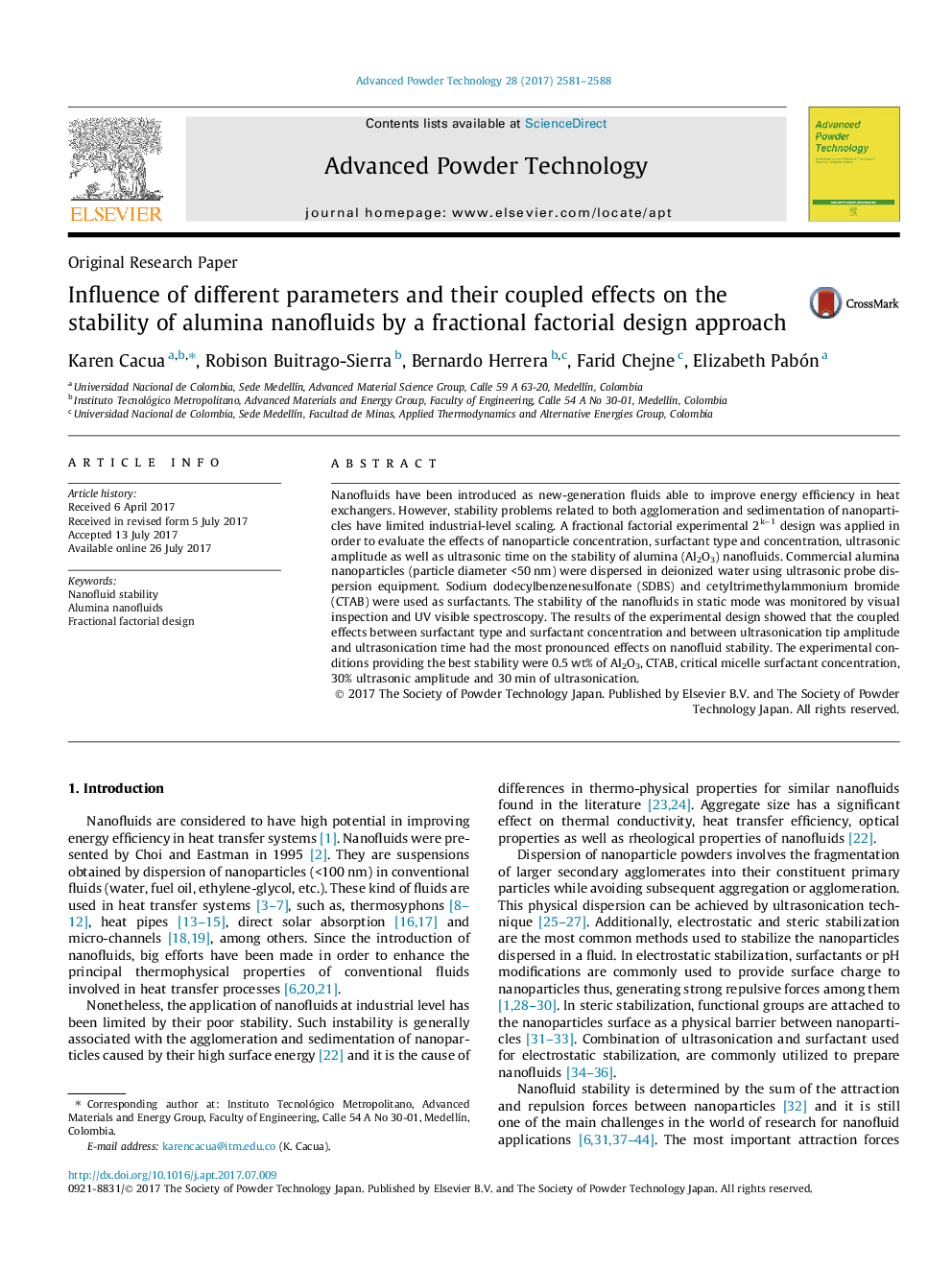| Article ID | Journal | Published Year | Pages | File Type |
|---|---|---|---|---|
| 6464541 | Advanced Powder Technology | 2017 | 8 Pages |
â¢Stability of alumina nanofluids was evaluated using a fractional factorial design.â¢Interactions between factors had the most pronounced effect on nanofluids stability.â¢Surfactant type and concentration played an important role in nanofluids stability.â¢Stability of nanofluids is improved using high energy provided by ultrasonic probe.
Nanofluids have been introduced as new-generation fluids able to improve energy efficiency in heat exchangers. However, stability problems related to both agglomeration and sedimentation of nanoparticles have limited industrial-level scaling. A fractional factorial experimental 2kâ1 design was applied in order to evaluate the effects of nanoparticle concentration, surfactant type and concentration, ultrasonic amplitude as well as ultrasonic time on the stability of alumina (Al2O3) nanofluids. Commercial alumina nanoparticles (particle diameter <50Â nm) were dispersed in deionized water using ultrasonic probe dispersion equipment. Sodium dodecylbenzenesulfonate (SDBS) and cetyltrimethylammonium bromide (CTAB) were used as surfactants. The stability of the nanofluids in static mode was monitored by visual inspection and UV visible spectroscopy. The results of the experimental design showed that the coupled effects between surfactant type and surfactant concentration and between ultrasonication tip amplitude and ultrasonication time had the most pronounced effects on nanofluid stability. The experimental conditions providing the best stability were 0.5Â wt% of Al2O3, CTAB, critical micelle surfactant concentration, 30% ultrasonic amplitude and 30Â min of ultrasonication.
Graphical abstractDownload high-res image (160KB)Download full-size image
